– By Gandhali Bhide
The announcement changed the geopolitical dynamics for India. Indian Parliament erupted with thunderous applause. By granting political asylum to His Holiness, the 14th Dalai Lama, India had overnight become an undeniable part of China’s Tibet issue. Incidentally, Taiwan and Tiananmen, as subjects ‘where thinking differently is forbidden’ in China, also begin with the letter ‘T’. These together are understood as the three sensitives ‘Ts’ for China.
Dalai Lama during his visit to Arunachal Pradesh and Assam in 2017, became emotional as he recalled his journey from Lhasa Palace to India. It was in Tawang, Arunachal Pradesh that His Holiness remembered the feeling of, ‘enjoying freedom for the first time’ after his two week-long journey crossing the Himalayas and the Brahmaputra to seek refuge in India.
Since 1950 China had started to annex large territories of Tibet, with an aim of a total military takeover. This decision not only was a threat to Tibet’s sovereignty and territorial integrity but also had implications for India.
Source – https://www.youtube.com/watch?v=SDx5og0T8vw&t=47s
With a secretary rank in the foreign department of British India, the Lt Colonel was ‘empowered to sign any Convention, Agreement or Treaty, which may be concluded at the Conference’. Yet, the Shimla Agreement in October 1913 was anything but an easy task for him. At the end of the second meeting between British India and China, the Lt Col was ‘at a loss as to what really was Tibet’. It is this officer’s last name that today infamously stands between India and Tibet, called the ‘McMahon Line’.
Tibet is more than just geography. It is the first of the three ‘Ts’ that established the way in which China decided to manage its affairs, in a world different from its own. On 17th March 1959, the 23-year-old young Dalai Lama, disguised as a soldier escaped from Lhasa palace along with his family members and top officials. This is considered one of the greatest escapes of 20th century. On 26th March 1959, Indian representatives welcomed Dalai Lama’s caravan at the India-Tibet border in Arunachal Pradesh. It was here that the 14th Dalai Lama wrote a letter to then PM Nehru, seeking political asylum. The last sentence of this letter, ‘Confident of your Kindness’, sums up India-Tibet’s long-standing relations and India’s civilizational legacy.
Source – https://www.youtube.com/watch?v=SDx5og0T8vw&t=47s
Eight days later, on 3rd April 1959, India granted His Holiness political asylum in the country, and Tibet’s government in exile was established in Dharamshala. Marking 63rd anniversary, I stress that this day deserves more precedence in India’s soft power diplomacy.
Soft power according to Joseph Nye, (who coined the term), has three aspects – culture, political values, and foreign policy. The congruency between these three aspects guarantees the credibility of a country’s soft power. Simply put, it’s the interplay between a country’s culture, its domestic and foreign policy. The concept of soft power emerged in the western world around 1980s, but as a phenomenon it existed long before in the Asian context. The greatest legacy of this is Buddhism.
Today, Southeast Asia has the highest Buddhist population in the world. A faith that originated in India and found its way to southeast Asia, through trade, exchanges, and people-to-people relations. The Bodhi tree, sitting under which Buddha gained enlightment, is part of the Indian state of Bihar today. Taking into consideration the geographical location of Bihar and PEW Research which states that, half (50%) of the world’s Buddhist live in China, Buddhism must have found its way to southeast Asia through Tibet.
What’s extraordinary is that there is not a single evidence of violence/colonization by India in southeast Asia, because that was never India’s intention, and as a country it continues to remain the same. This display’s India’s cultural diplomacy through Buddhism in southeast Asia, which as a phenomenon was in place in Asia, long before the term was coined in the west.
Although a minority faith in India today, Buddhism is deeply rooted in shaping modern day India. The first example of this presents itself in 1959. India is, as S. Radhakrishanan (1956), former President of India observed, ‘home of Buddha’. The Buddhist value system that preaches peace, goodness, love, and wisdom remains strong in India which where the overriding features of the foreign policy decision of granting political asylum. In contrast, China with half of Buddhist population of the world did not abide by Buddhist values when it threatened the Dalai Lama.
As a nation-state the values and cultural ethos of Buddhist soft power first manifested itself in India’s domestic and foreign policy on 3rd April 1959. This day therefore deserves to be marked. A day that not only gave His Holiness the 14th Dalai Lama and his govt in exile a hope for Tibet, but also paved the way the world perceived India.
Source – https://www.youtube.com/watch?v=SDx5og0T8vw&t=47s
Just over a decade after independence India was facing its own domestic problems. Grappling with unemployment, poverty, regional disputes; India had a lot on its plate. Moreover, India gave up the inherited extraterritorial rights from Britain over Tibet, acknowledging the matter as the ‘Tibet region of China’. Yet India granted the 14th Dalai Lama, political asylum when His Holiness showed up at India’s borders. It must have been a difficult decision, and the complexities that are only visible in hindsight.
Granting political asylum to His Holiness was a courageous decision. A decision that underlines the cultural and domestic synchronization of India’s cultural value which clearly spilled over in its foreign policy decisions. Freedom, democracy, basic human rights, and peaceful resolution of disputes are the modern-day manifestation of Buddhist values and philosophies that were all applicable when India granted political asylum to the Tibetan leader.
Moreover, apart from Britain, other colonial powers like the French and the Portuguese remained on Indian territory even after 1947. It was in 1961 and 1963, respectively that these colonial powers were ousted from Goa and Pondicherry integrating them in the Indian union. In a sense therefore, even before India was fully ‘independent’ from all colonial powers, it took a decision to shelter another country’s leader and his government in exile. This highlights India’s custodian role in being true to its cultural values even when it faces its own crisis.
As India embarks on the Buddhist faith-based diplomacy, 3rd April becomes an extremely vital day to be aware of, not only for Indians but the world. It was the day, India’s cultural values, domestic and foreign policy where synergized. It’s a day to be understood and internalized in a way that showcases India’s soft power through Buddhism at its finest form.
The decision taken on 3rd April is also of absolute significance while countering China’s Buddhist diplomacy in Asia and around the world. Consistency between India’s values and action on 3rd April 1959 clearly displayed the underlining importance of cultural values in India. It also showcases the belief on Dalai Lama’s part that, it is in India he, and his entourage would be safe. It was the land of Buddha that gave refuge to the Tibetan spiritual leader who considers himself the ‘longest guests’ of India.
The legacy of the decision made in 1959 have been consequential. In one or the other way India has always stood its ground based on its principals and values. In 2014, India launched its ‘Buddhist Circuit’ initiative that aimed at investing and enhancing spiritual, environmental, social, and economic value of the places visited by Buddha. An important part of this circuit is the Buddhist heritage trail that includes Tawang Monastery. It is the most important Tibetan Buddhist monastery outside Tibet. Tawang in Arunachal Pradesh is the birthplace of the sixth Dalai Lama and is home to Tibetan Buddhist centre. This becomes important to take into consideration because, China has been claiming Indian state of Arunachal Pradesh as part of their territory for a long time. Mao Zedong metaphorically viewed Arunachal Pradesh as one of the five fingers of the right palm of China. Tibet was referred by Mao as the ‘right palm’. Therefore, including Arunachal Pradesh in the Buddhist heritage trail signals three things – first Arunachal Pradesh is non-negotiable Indian territory. It forms part of Indian Buddhist diplomacy, and thirdly, including Tibetan Buddhism from northeast India in its circuit.
Moving beyond symbolism, and directly supporting the cause of His Holiness and his government in exile, Indian central government in the first week of April 2022, extended Rs. 40 crore relief to Dalai Lama’s Tibetan Committee for another five years, up to fiscal year 2025-26. This showcases India’s continued efforts in upholding the legacy of the decision made in 1959.
Foreign policy implications of India’s decision including the 1962 war were the result of China’s inconsistency between its Buddhist values and political system and not India’s. Realist theorist of international relations may consider this naïve, yet we find countries making realistically irrational political decisions that are rooted in their culture and values.
Interestingly, a small eastern European country of Lithuania had been in news recently over its stand on the status of Taiwan. Lithuania became the first country in Europe to host an official representative office for Taiwan, which China considers its own territory. Many other European countries for their part have spoken about the dangers of Chinese investment. Maybe it would be Lithuania that takes on the second ‘T’ for China solely on the bases of its values and cultural principals.
Thus, India’s decision of granting political asylum to His Holiness Dalai Lama reflect India’s cultural values in foreign policy decision making. In 1959, India displayed what the 19th century English preacher, Charles Spurgeon, famously said, ‘always begin as you mean to go on’.

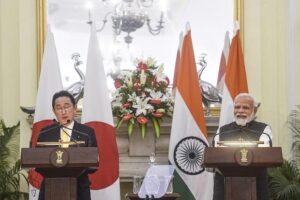







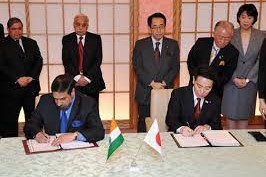

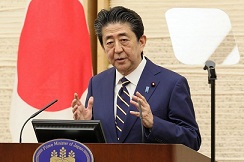
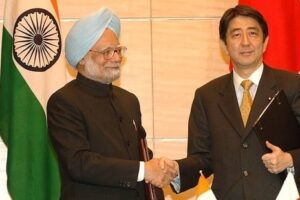
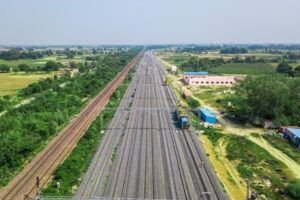
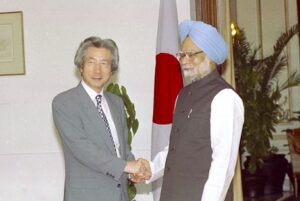
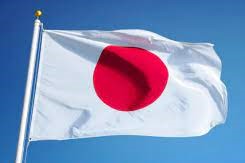
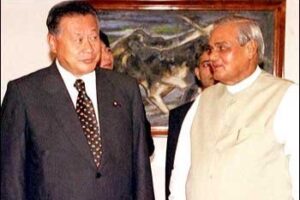

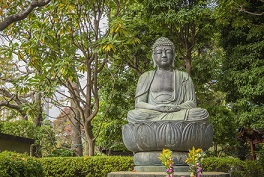



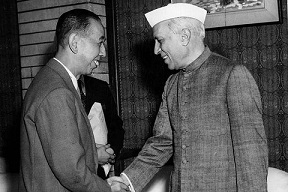



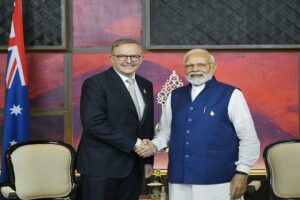



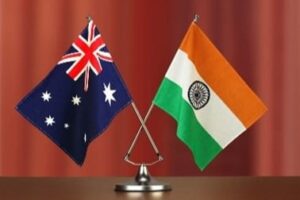


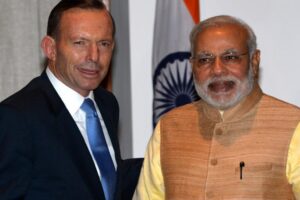
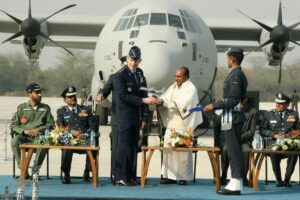




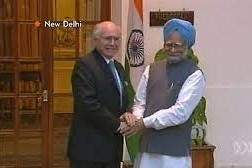
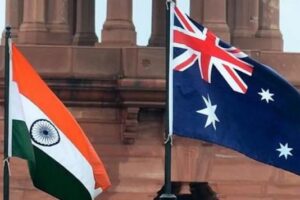
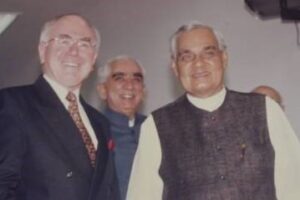

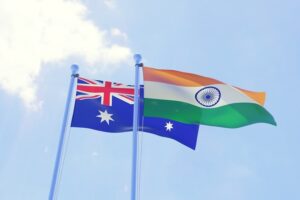

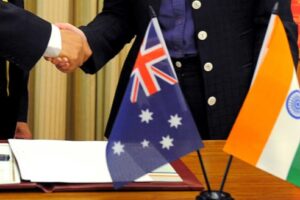


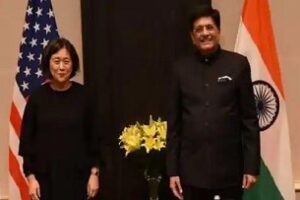
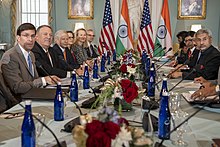

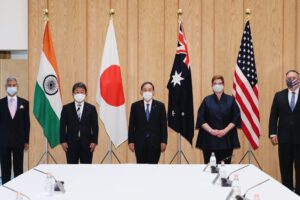

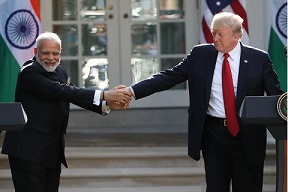
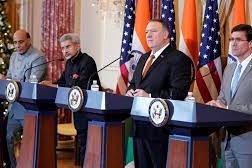

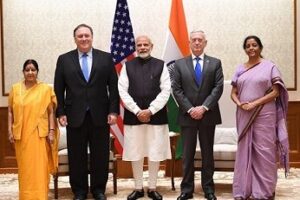
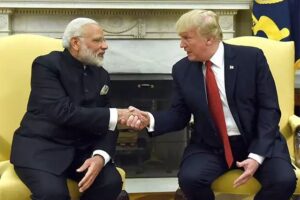
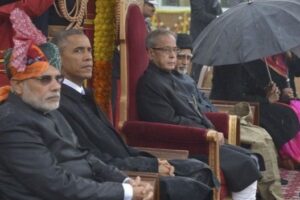

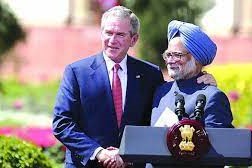
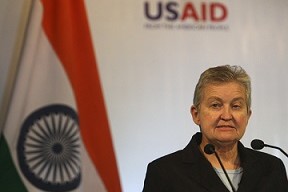
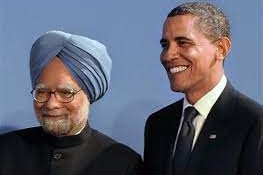
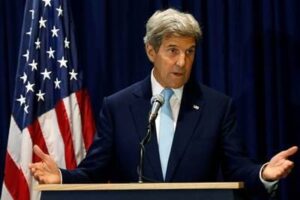

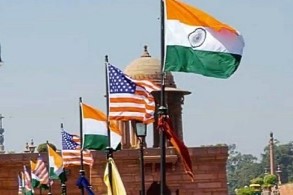
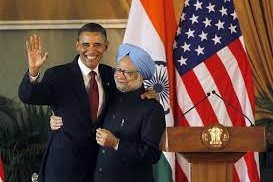
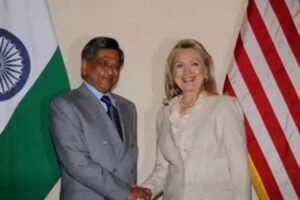
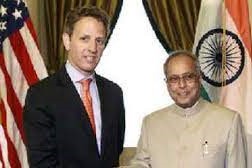
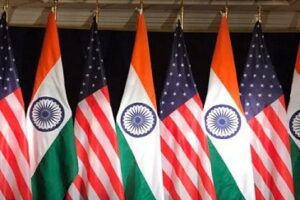
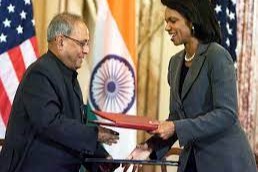

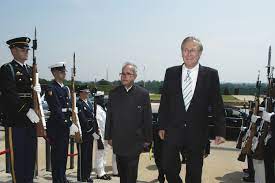


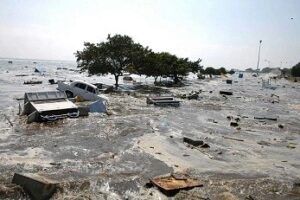

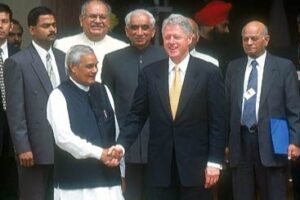
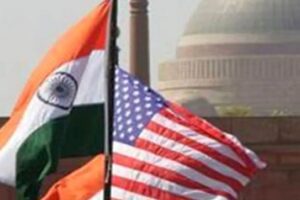

 onducted a total of five underground nuclear tests, breaking a 24-year self-imposed moratorium on nuclear testing. Pakistan followed, claiming 5 tests on May 28, 1998, and an additional test on May 30. The unannounced tests created a global storm of criticism, as well as a serious setback for decades of U.S. nuclear nonproliferation efforts in South Asia. On May 13, 1998, President Clinton imposed economic and military sanctions on India, mandated by Section 102 of the Arms Export Control Act (AECA), and applied the same sanctions to Pakistan on May 30. Some effects of the sanctions on India included: termination of $21 million in FY1998 economic development assistance; postponement of $1.7 billion in lending by the International Financial Institutions (IFI), as supported by the Group of Eight (G-8) leading industrial nations; prohibition on loans or credit from U.S. banks to the government of India; and termination of Foreign Military Sales under the Arms Export Control Act. Humanitarian assistance, food, or other agricultural commodities are excepted from sanctions under the law.
onducted a total of five underground nuclear tests, breaking a 24-year self-imposed moratorium on nuclear testing. Pakistan followed, claiming 5 tests on May 28, 1998, and an additional test on May 30. The unannounced tests created a global storm of criticism, as well as a serious setback for decades of U.S. nuclear nonproliferation efforts in South Asia. On May 13, 1998, President Clinton imposed economic and military sanctions on India, mandated by Section 102 of the Arms Export Control Act (AECA), and applied the same sanctions to Pakistan on May 30. Some effects of the sanctions on India included: termination of $21 million in FY1998 economic development assistance; postponement of $1.7 billion in lending by the International Financial Institutions (IFI), as supported by the Group of Eight (G-8) leading industrial nations; prohibition on loans or credit from U.S. banks to the government of India; and termination of Foreign Military Sales under the Arms Export Control Act. Humanitarian assistance, food, or other agricultural commodities are excepted from sanctions under the law. 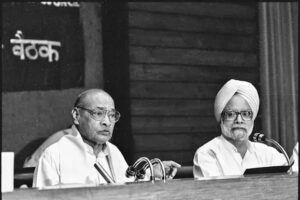
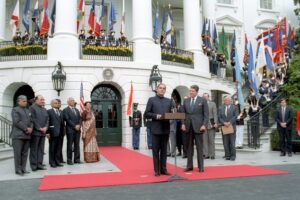
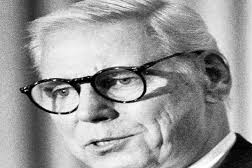

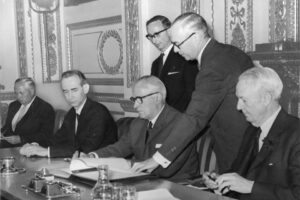
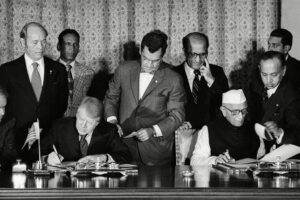
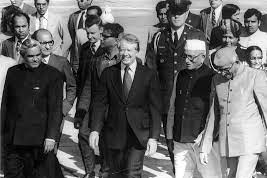
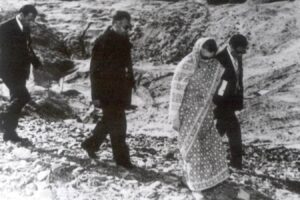
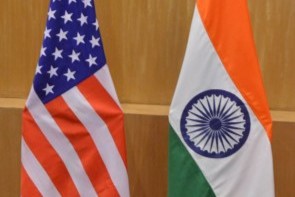

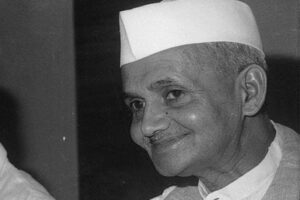

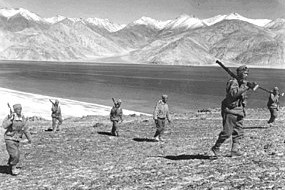
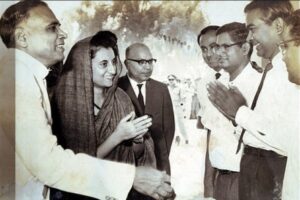
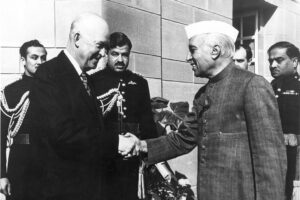

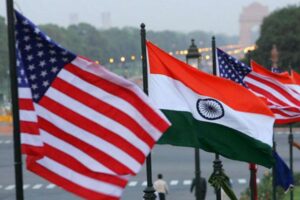
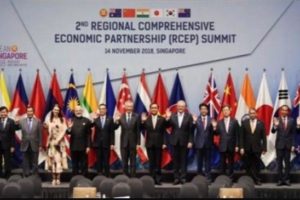 The first ministerial level meeting of QUAD was held on the sidelines of the United Nations General Assembly in New York. Before this, the QUAD had
The first ministerial level meeting of QUAD was held on the sidelines of the United Nations General Assembly in New York. Before this, the QUAD had AusIndEx is an exercise between India and Australia which was first held in 2015.The Australian
AusIndEx is an exercise between India and Australia which was first held in 2015.The Australian 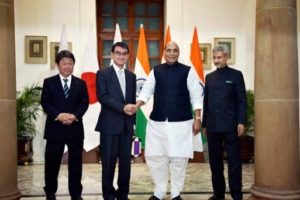







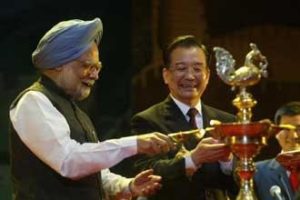 On recommendations of the Japanese government, the four countries met at Manila, Philippines for ASEAN Regional Forum (ARF) originally, but also ended up having a meeting of what we call the first meeting of four nation states on issues of
On recommendations of the Japanese government, the four countries met at Manila, Philippines for ASEAN Regional Forum (ARF) originally, but also ended up having a meeting of what we call the first meeting of four nation states on issues of 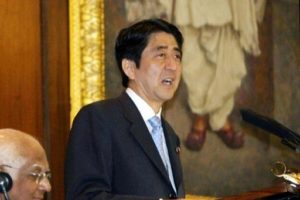 On his official visit to India, Japanese PM Mr. Shinzo Abe reinforced the ties of two nations, i.e., Japan and India with his famous speech about
On his official visit to India, Japanese PM Mr. Shinzo Abe reinforced the ties of two nations, i.e., Japan and India with his famous speech about  In 2007, Japanese President Shinzo Abe resigned from his post citing health reasons. This had a significant impact on QUAD as he was the architect & advocate of QUAD. His successor, Yasuo Fukuda, did not take up QUAD with such zeal leading to dormancy of the forum. (
In 2007, Japanese President Shinzo Abe resigned from his post citing health reasons. This had a significant impact on QUAD as he was the architect & advocate of QUAD. His successor, Yasuo Fukuda, did not take up QUAD with such zeal leading to dormancy of the forum. (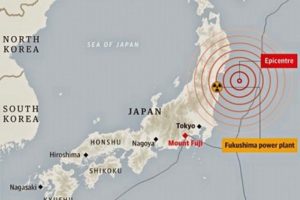 Japan earthquake and tsunami of 2011, also called Great Sendai Earthquake or Great Tōhoku Earthquake, was a 9.0 magnitude earthquake which struck below the floor of the Western Pacific at 2:49 PM. The powerful earthquake affected the northeastern coast of Honshu, Japan’s main island, and also initiated a series of large tsunami waves that devastated coastal areas of Japan, which also led to a major nuclear accident. Japan received aid from India, US, Australia as well as other countries. US Navy aircraft carrier was dispatched to the area and Australia sent search-and-rescue teams.
Japan earthquake and tsunami of 2011, also called Great Sendai Earthquake or Great Tōhoku Earthquake, was a 9.0 magnitude earthquake which struck below the floor of the Western Pacific at 2:49 PM. The powerful earthquake affected the northeastern coast of Honshu, Japan’s main island, and also initiated a series of large tsunami waves that devastated coastal areas of Japan, which also led to a major nuclear accident. Japan received aid from India, US, Australia as well as other countries. US Navy aircraft carrier was dispatched to the area and Australia sent search-and-rescue teams. 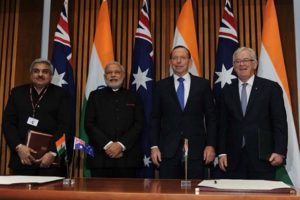 India and Australia signed the
India and Australia signed the  The India-Japan Agreement for Cooperation in the Peaceful Uses of Nuclear Energy was signed on 11 November, 2016 and came into force on 20 July, 2017 which was representative of strengthening ties between India and Japan. Diplomatic notes were exchanged between Dr. S. Jaishankar and H.E. Mr. Kenji Hiramatsu, Ambassador of Japan to India. (
The India-Japan Agreement for Cooperation in the Peaceful Uses of Nuclear Energy was signed on 11 November, 2016 and came into force on 20 July, 2017 which was representative of strengthening ties between India and Japan. Diplomatic notes were exchanged between Dr. S. Jaishankar and H.E. Mr. Kenji Hiramatsu, Ambassador of Japan to India. (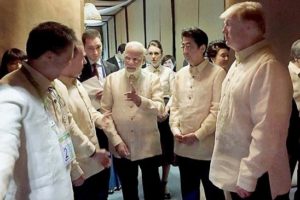 The foreign ministry
The foreign ministry The Officials of QUAD member countries met in Singapore on November 15, 2018 for consultation on regional & global issues of common interest. The main discussion revolved around connectivity, sustainable development, counter-terrorism, maritime and cyber security, with the view to promote peace, stability and prosperity in the
The Officials of QUAD member countries met in Singapore on November 15, 2018 for consultation on regional & global issues of common interest. The main discussion revolved around connectivity, sustainable development, counter-terrorism, maritime and cyber security, with the view to promote peace, stability and prosperity in the  The 23rd edition of trilateral Malabar maritime exercise between India, US and Japan took place on 26 September- 04 October, 2019 off the coast of Japan.
The 23rd edition of trilateral Malabar maritime exercise between India, US and Japan took place on 26 September- 04 October, 2019 off the coast of Japan.  After the first ministerial level meeting of QUAD in September, 2019, the senior officials of US, Japan, India and Australia again met for consultations in Bangkok on the margins of the East Asia Summit. Statements were issued separately by the four countries. Indian Ministry of External Affairs said “In statements issued separately by the four countries, MEA said, “proceeding from the strategic guidance of their Ministers, who met in New York City on the sidelines of the UN General Assembly recently, the officials exchanged views on ongoing and additional practical cooperation in the areas of connectivity and infrastructure development, and security matters, including counterterrorism, cyber and maritime security, with a view to promoting peace, security, stability, prosperity in the Indo-Pacific region.”
After the first ministerial level meeting of QUAD in September, 2019, the senior officials of US, Japan, India and Australia again met for consultations in Bangkok on the margins of the East Asia Summit. Statements were issued separately by the four countries. Indian Ministry of External Affairs said “In statements issued separately by the four countries, MEA said, “proceeding from the strategic guidance of their Ministers, who met in New York City on the sidelines of the UN General Assembly recently, the officials exchanged views on ongoing and additional practical cooperation in the areas of connectivity and infrastructure development, and security matters, including counterterrorism, cyber and maritime security, with a view to promoting peace, security, stability, prosperity in the Indo-Pacific region.” US 2+2 Ministerial Dialogue was held on 18 December, 2019, in Washington DC. Secretary of State Michael R. Pompeo and Secretary of Defense Mark T. Esper will host Indian Minister of External Affairs Dr. S. Jaishankar and Minister of Defense Shri Rajnath Singh. The discussion focussed on deepening bilateral strategic and defense cooperation, exchanging perspectives on global developments, and our shared leadership in the Indo-Pacific region.The two democracies signed the Industrial Security Annex before the 2+2 Dialogue. Assessments of the situation in Afghanistan, Pakistan, Nepal, Sri Lanka, and the Indian Ocean region in general were shared between both countries. (
US 2+2 Ministerial Dialogue was held on 18 December, 2019, in Washington DC. Secretary of State Michael R. Pompeo and Secretary of Defense Mark T. Esper will host Indian Minister of External Affairs Dr. S. Jaishankar and Minister of Defense Shri Rajnath Singh. The discussion focussed on deepening bilateral strategic and defense cooperation, exchanging perspectives on global developments, and our shared leadership in the Indo-Pacific region.The two democracies signed the Industrial Security Annex before the 2+2 Dialogue. Assessments of the situation in Afghanistan, Pakistan, Nepal, Sri Lanka, and the Indian Ocean region in general were shared between both countries. (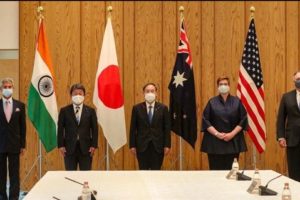 The foreign ministers of QUAD continued their discussions from the last ministerial level meeting in 2019, on 6 October, 2020. While there was no joint statement released, all countries issued individual readouts. As per the issue readout by India, the discussion called for a coordinated response to the challenges including financial problems emanating from the pandemic, best practices to combat Covid-19, increasing the resilience of supply chains, and enhancing access to affordable vaccines, medicines and medical equipment. There was also a focus on maintaining stability in the Indo-Pacific region amidst growing tensions. Australian media release mentions “We emphasised that, especially during a pandemic, it was vital that states work to ease tensions and avoid exacerbating long-standing disputes, work to counter disinformation, and refrain from malicious cyberspace activity. Ministers reiterated that states cannot assert maritime claims that are inconsistent with international law, particularly the United Nations Convention on the Law of the Sea (UNCLOS).”
The foreign ministers of QUAD continued their discussions from the last ministerial level meeting in 2019, on 6 October, 2020. While there was no joint statement released, all countries issued individual readouts. As per the issue readout by India, the discussion called for a coordinated response to the challenges including financial problems emanating from the pandemic, best practices to combat Covid-19, increasing the resilience of supply chains, and enhancing access to affordable vaccines, medicines and medical equipment. There was also a focus on maintaining stability in the Indo-Pacific region amidst growing tensions. Australian media release mentions “We emphasised that, especially during a pandemic, it was vital that states work to ease tensions and avoid exacerbating long-standing disputes, work to counter disinformation, and refrain from malicious cyberspace activity. Ministers reiterated that states cannot assert maritime claims that are inconsistent with international law, particularly the United Nations Convention on the Law of the Sea (UNCLOS).”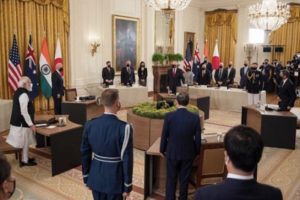 On September 24, President Biden hosted Prime Minister Scott Morrison of Australia, Prime Minister Narendra Modi of India, and Prime Minister Yoshihide Suga of Japan at the White House for the first-ever in-person Leaders’ Summit of the QUAD. The leaders released a Joint Statement which summarised their dialogue and future course of action. The regional security of the Indo-Pacific and strong confidence in the ASEAN remained on the focus along with response to the Pandemic.
On September 24, President Biden hosted Prime Minister Scott Morrison of Australia, Prime Minister Narendra Modi of India, and Prime Minister Yoshihide Suga of Japan at the White House for the first-ever in-person Leaders’ Summit of the QUAD. The leaders released a Joint Statement which summarised their dialogue and future course of action. The regional security of the Indo-Pacific and strong confidence in the ASEAN remained on the focus along with response to the Pandemic. 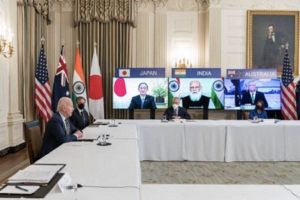 The QUAD Vaccine Partnership was announced at the first QUAD Summit on 12 March 2021 where QUAD countries agreed to deliver 1.2 billion vaccine doses globally. The aim was to expand and finance vaccine manufacturing and equipping the Indo-Pacific to build resilience against Covid-19. The launch of a senior-level QUAD Vaccine Experts Group, comprised of top scientists and officials from all QUAD member governments was also spearheaded.
The QUAD Vaccine Partnership was announced at the first QUAD Summit on 12 March 2021 where QUAD countries agreed to deliver 1.2 billion vaccine doses globally. The aim was to expand and finance vaccine manufacturing and equipping the Indo-Pacific to build resilience against Covid-19. The launch of a senior-level QUAD Vaccine Experts Group, comprised of top scientists and officials from all QUAD member governments was also spearheaded.  Although the Tsunami Core group had to be disbanded on fulfilment of its purpose, however the quadrilateral template that formed remained intact as a successful scaffolding of four countries, as stated by authors Patrick Gerard Buchan and Benjamin Rimland in their diplomatic brief about QUAD ( you can access the brief at
Although the Tsunami Core group had to be disbanded on fulfilment of its purpose, however the quadrilateral template that formed remained intact as a successful scaffolding of four countries, as stated by authors Patrick Gerard Buchan and Benjamin Rimland in their diplomatic brief about QUAD ( you can access the brief at 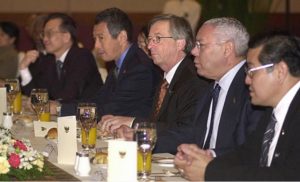 Secretary of State Colin Powell stated that the Core Tsunami Group was to be disbanded and folded and clubbed with the broader United Nations led Relief Operations. In a Tsunami Relief Conference in Jakarta, Secretary Powell stated that
Secretary of State Colin Powell stated that the Core Tsunami Group was to be disbanded and folded and clubbed with the broader United Nations led Relief Operations. In a Tsunami Relief Conference in Jakarta, Secretary Powell stated that 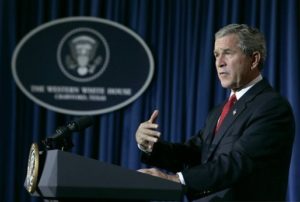 Soon after the Earthquake and Tsunami crisis, humanitarian reliefs by countries, viz., US, India, Japan, and Australia started to help the 13 havoc-stricken countries. The US initially promised $ 35 Millions in aid. However, on 29
Soon after the Earthquake and Tsunami crisis, humanitarian reliefs by countries, viz., US, India, Japan, and Australia started to help the 13 havoc-stricken countries. The US initially promised $ 35 Millions in aid. However, on 29 At 7:59AM local time, an earthquake of 9.1 magnitude (undersea) hit the coast of Sumatra, an Indonesian island. As a result of the same, massive waves of Tsunami triggered by the earthquake wreaked havoc for 7 hours across the Indian Ocean and to the coastal areas as far away as East Africa. The infamous Tsunami killed around 225,000 people, with people reporting the height of waves to be as high as 9 metres, i.e., 30 feet. Indonesia, Srilanka, India, Maldives, Thailand sustained horrendously massive damage, with the death toll exceeding 200,000 in Northern Sumatra’s Ache province alone. A great many people, i.e., around tens of thousands were found dead or missing in Srilanka and India, mostly from Andaman and Nicobar Islands of Indian territory. Maldives, being a low-lying country, also reported casualties in hundreds and more, with several non-Asian tourists reported dead or missing who were vacationing. Lack of food, water, medicines burgeoned the numbers of casualties, with the relief workers finding it difficult to reach the remotest areas where roads were destroyed or civil war raged. Long-term environmental damage ensued too, as both natural and man-made resources got demolished and diminished.
At 7:59AM local time, an earthquake of 9.1 magnitude (undersea) hit the coast of Sumatra, an Indonesian island. As a result of the same, massive waves of Tsunami triggered by the earthquake wreaked havoc for 7 hours across the Indian Ocean and to the coastal areas as far away as East Africa. The infamous Tsunami killed around 225,000 people, with people reporting the height of waves to be as high as 9 metres, i.e., 30 feet. Indonesia, Srilanka, India, Maldives, Thailand sustained horrendously massive damage, with the death toll exceeding 200,000 in Northern Sumatra’s Ache province alone. A great many people, i.e., around tens of thousands were found dead or missing in Srilanka and India, mostly from Andaman and Nicobar Islands of Indian territory. Maldives, being a low-lying country, also reported casualties in hundreds and more, with several non-Asian tourists reported dead or missing who were vacationing. Lack of food, water, medicines burgeoned the numbers of casualties, with the relief workers finding it difficult to reach the remotest areas where roads were destroyed or civil war raged. Long-term environmental damage ensued too, as both natural and man-made resources got demolished and diminished.
No responses yet